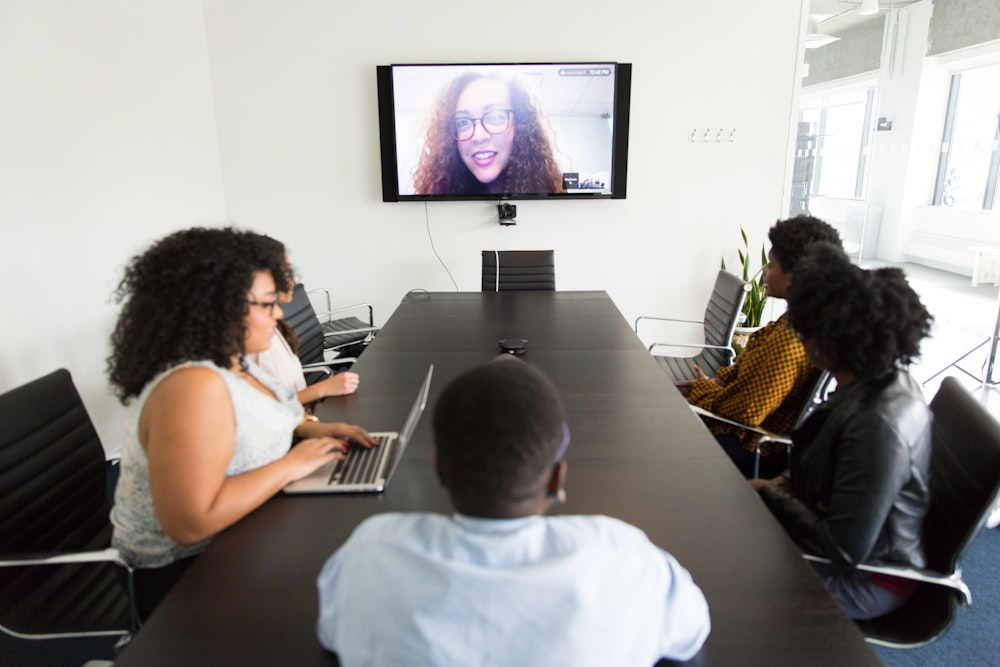The Hybrid Work Challenge
People are coming back to the office!
At last all of the issues that we were experiencing during remote work are about to go away.
…or are they?
Don’t get us wrong, remote work has its own challenges – Not sitting in the same building as our co-workers has made it so much harder to work as a team. We just can’t form the same human connection or collaborate when we’re talking through a screen.
…with our cameras off.
…while working on other things in the background.
Not surprisingly, 73% of employees agreed that genuine collaboration takes more effort and planning today than it did before March 2020 (…ok, we were honestly surprised that percentage wasn’t higher).

With employees coming back to the office, it’s easy to believe that hybrid work is going to fix all of our woes.
…Well, that’s what we hoped anyway, but the data suggests otherwise.
To get the real scoop, we interviewed thousands of employees to understand how they’re feeling, what they’re struggling with, and what their challenges are as they’re adjusting to the new world of remote and hybrid work.
In fact, we found that fully-remote workers actually reported that it was easier to clearly communicate roles, responsibilities and tasks for a project, make sure everyone is doing their part to keep the project moving forward, and keep everyone in the loop on crucial information on projects and initiatives than hybrid workers.
So, if they’re able to physically see each other and collaborate face-to-face,

Why are hybrid workers struggling more than their fully-remote counterparts?
The answer a complex combination of factors that results in higher burnout, overwhelm and fatigue –
Unlike in-office and fully-remote workers, hybrid workers have to handle their entire workload while managing and switching between two entirely different setups – one at home and one in the office.
Since March of 2020, almost half of hybrid workers (more than any other group) reported giving up on a task because they couldn’t remember a password or didn’t have access to a device where a password was saved, and this is only the tip of the iceberg.
Hybrid workers also have to track which days are “office days” and which days are “home days”, make sure they have all of their necessary supplies with them in the right locations, and handle other personal items like child care, meal planning, and other household tasks at the same time.
Constantly switching between locations in this way breaks routines and requires much more mental bandwidth to manage effectively (which is likely why more hybrid workers have used the term ‘burnt out’ to describe their work in the last year (67%), vs in office (63%) and fully-remote workers (54%)).

…But there’s an even deeper fear at play with hybrid workers –
The fear of missing out (FOMO).
A full 66% of hybrid employees are afraid they’re missing out on opportunities for collaboration and important “hallway discussions” when they’re not in the office.
Basically, it’s a level playing field if everyone is in the office or everyone is out of the office, but, if some employees are in the office more than others, managers can start to unconsciously favor the employees they see more often.
This recency bias can also exacerbate existing gender inequities, as women are more likely than men to juggle paid work with childcare and caregiving responsibilities that keep them from visiting the office.
So, with all of this additional fear and stress at play,

How can we help our hybrid friends cope with the new work environment?
(Psst! If you thought we were going to say ‘with the Enboarder Engagement Model,’ you were totally right.)
What is the Enboarder Engagement Model?
Glad you asked!
The Enboarder Engagement Model is the culmination of the latest research and findings in behavioural psychology broken down to help you understand how to use the science of influence, persuasion, and motivation to help your employees through big changes and tough transitions – like adjusting to hybrid work.
(If you’re interested in learning more about the model itself, we actually wrote the book on it.)
To reduce stress and burnout, hybrid employees need these 4 things from you:
Engagement

Hybrid employees are juggling more than any other employee group, so generic-looking HR messages are going to end up in the bin.
To keep our hybrid friends engaged and participating with the HR requests, programs, and initiatives we know they need to be successful, they need to feel like we’re talking to them personally, and that we’re helping express the greater purposes behind our programs and requests.
Make sure your communications are personalized and unique (e.g. use memes, pictures, and videos to help them get attention and cut through the clutter!) and include the “why” behind your requests.
Nudges

Did we mention that hybrid workers are feeling overwhelmed?
One huge factor in hybrid employee overwhelm is the multitude of notifications they receive each day…and it’s not just the sheer number of notifications they’re receiving but the timing of those notifications as well.
Of those employees who said they skipped an HR task in the past 12 months, notifications getting buried was the number 1 reason they skipped and the fact that these reminders typically come at a bad time was number 2.
On the flip side, a timely reminder about the task was the number 1 thing that would help respondents to complete an HR task.
Nudges are that timely reminder – They’re helpful, bite-sized, and relevant communications, delivered at the right time, with the right information.
So to help reduce hybrid worker overwhelm and help free up some of their mental bandwidth, be sure you’re sending information at the proper time and communicating only what’s relevant at the moment. (e.g. Sending a “Return to the Office Checklist” to a specific group of employees 2 days before their return date.)
Ease

Hybrid workers have no shortage of challenges, so look for any opportunities to reduce friction and make their transitions easier.
This could be as easy as providing that “Return to the Office Checklist” we just mentioned, or providing extra (or more mobile) equipment so your employee doesn’t have to carry the same one back and forth.
From an “HR systems” perspective, try to use your employee’s preferred communication method (Slack, email, text, etc.), work to reduce the number of necessary logins (use a Single Sign On service if possible or use tools that avoid logins altogether), and make sure you’re putting direct links in your requests and communications.
Every step you take to remove friction, helps give your employee one less thing to worry about, and they’ll thank you for it.
Connection

Remember how we mentioned that hybrid employees feel more left out than any other group?
It turns out that not having a party to go to on Friday night is better than knowing that there’s a party you’re not invited to.
Engagement, Nudges, and Ease are great tools, but Connection is what ties them all together. Connection is the biggest factor in reducing hybrid worker FOMO and motivating them to do their best work:
- 82% of employees say they’re more motivated to work on a project/program when they feel close to the team
- 84% of employees find it easier to do their best work when they feel close to the team they’re working with
So, in addition to increasing engagement and ease, be sure to “nudge” your managers and teammates to check in on their hybrid colleagues at regular intervals to encourage them and make sure they know they’re a valued member of the team.
…Oh, one more thing.
The 4 tactics we covered are incredibly useful, but if you really want to hit the next-level of hybrid worker success, they have to be done the right way.
Yep. For these elements to work most effectively, you have to engage each element with your hybrid friends in mind. (We call this the Human-Centric wrapper.)
Put yourself in your hybrid employee’s shoes by asking yourself these questions:
- What stress could your employee be going through mentally and/or emotionally during the transition process?
- Are there any factors that could contribute to their FOMO – and what would help alleviate them?
- What information and support do they need from you to help their transitions go more smoothly?
- How much information can they handle at a time and when should you send it?
Remember, our hybrid friends are feeling more pressure and stress than both our in-office and fully-remote employees, so show them that you’re making an effort to work with them and see things from their perspective and they will surely notice!
For the rest of the findings from our full research report – Click here.
Want to see results faster?
We got you.
We built our whole platform around this very psychology and the 4 elements of Human Connection to allow you to build and deploy effective human-centric journeys from day one. Whether it’s onboarding, learning and development, change management, diversity and inclusion, or employee transitions, we’ve reimagined HR. Get a free demo today and find out why our customers love Enboarder as much as you’re about to!